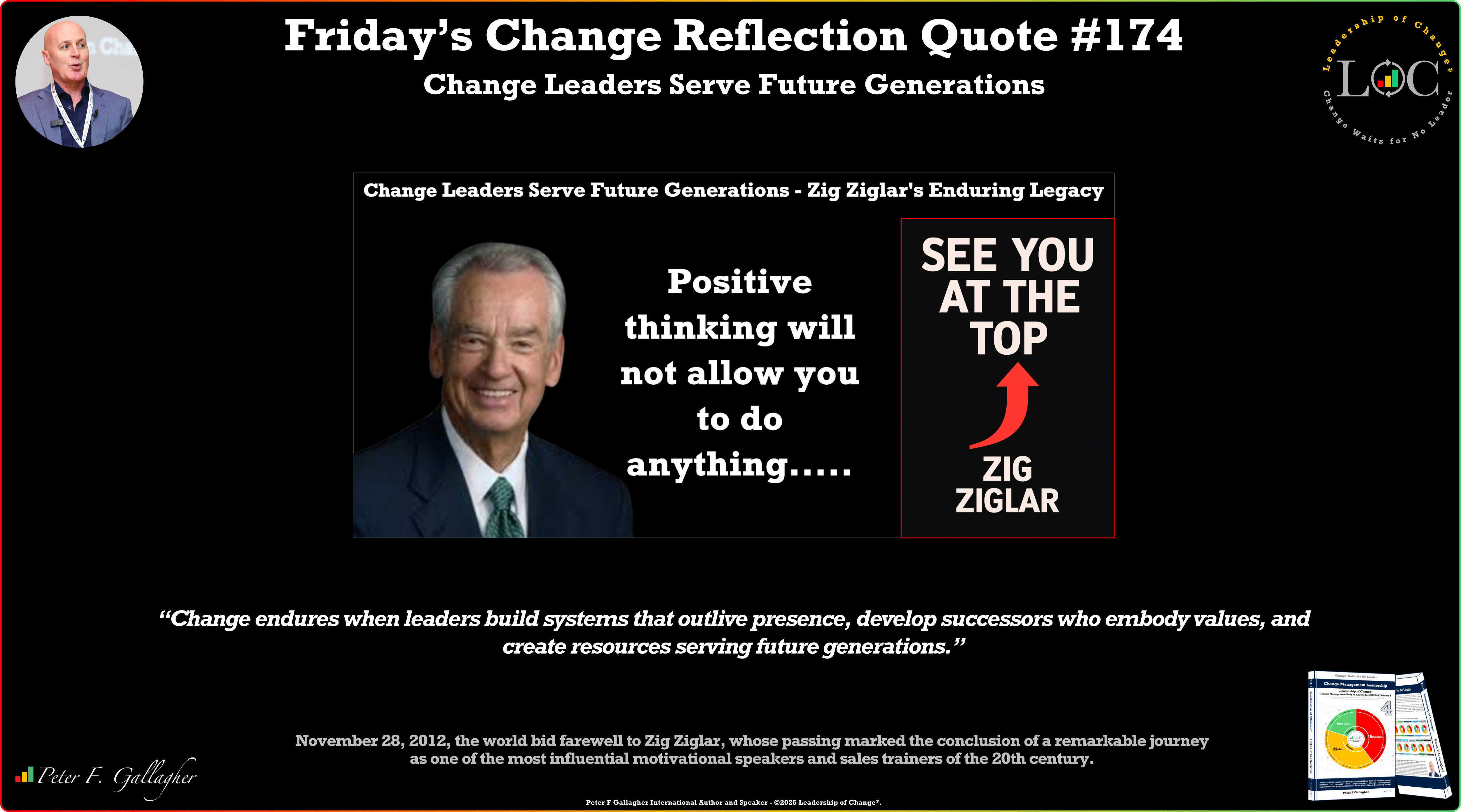When teams execute at high speed without strategic clarity, momentum becomes misdirection. This article explores why clarity must precede speed to avoid chaos in leadership.
A 29-title AI curriculum spanning technical foundations (code, algorithms), strategic business applications (LLMs, Agentic AI), and existential/geopolitical impact (control, global power).
Change Leaders Serve Future Generations. Change endures when leaders build systems that outlive presence, develop successors who embody values, and create resources serving future generations.
Top 10 Leadership and Management links of the week, curated by Corix Partners Founder and CEO JC Gaillard, focusing on cyber security of course, but also a large cross section of subjects including digital transformation, emerging tech, ESG governance and the future of work.
How a clear Definition of Done lifts quality, cuts rework, helps teams deliver consistent finishes!.
This article explores how recent Thinkers360 recognition across coaching, innovation, and creative design has amplified a deeper responsibility: building PlanetaryCitizens.net as a global portal for conscious, collaborative leadership. It outlines how the platform supports humanity’s evolution towar
Highly effective leaders have a vision, and they understand what it will take to get there. They know each step of the journey to success.
Business owners often use the terms "exit planning" and "succession planning" interchangeably, but these concepts, while related, have distinct focuses and purposes.
Michael Beer argues that organisations rarely fail from bad strategy, but from “Silent Killers” — hidden, systemic barriers.
This architecture integrates Gemini 3 Pro (reasoning), V-JEPA (perception), and a Predictive Latent Dynamics Model (causal world simulation) to create a modular, agentic AGI for autonomous flight, aligning with five core AGI pillars.
Gemini 3 Pro's superior capabilities (reasoning, multimodality, coding) are due to Google's "full-stack advantage"—co-designing its MoE architecture with custom TPUs for training and efficient inference.
Most brands can’t see their real suppliers, or the emissions that matter. Food supply chains show the hardest version of the problem, and the blueprint for solving it. Here’s how trusted, primary Scope 3 data is finally becoming possible.
Change Leaders Instil Compliance Frameworks.“Leading change requires balancing innovation velocity with institutional integrity, recognising that sustainable growth emerges from foundational compliance rather than circumventing established frameworks.
Top 10 Leadership and Management links of the week, curated by Corix Partners Founder and CEO JC Gaillard, focusing on cyber security of course, but also a large cross section of subjects including digital transformation, emerging tech, ESG governance and the future of work.
For entrepreneurs, content creators and independent professionals, the digital landscape has changed rapidly. In the past, having a presence was enough. Today, the question is no longer “do you show up?” — it is “are you perceived and relevant?”
Organizations talk about inclusion and transparency, but access remains one of the strongest - yet least examined - signals of power. Who gets into which room shapes culture more than any strategy deck.
A boss can influence people but have no real followers. A leader must only influence followers. A boss has workers who follow because they have to. A leader has a team who follow because they want to.
Controlled AGI integrates LeJEPA for mathematically stable perception and world models with DeepSeek/Qwen3-VL for complex reasoning. Rigorous, iterative constraint and validation systems guarantee safety.
 Operational Speed Without Strategic Clarity Creates Chaos
Operational Speed Without Strategic Clarity Creates Chaos The AI Curriculum: A Library's Deep Dive into Artificial Intelligence
The AI Curriculum: A Library's Deep Dive into Artificial Intelligence Friday’s Change Reflection Quote - Leadership of Change - Change Leaders Serve Future Generations
Friday’s Change Reflection Quote - Leadership of Change - Change Leaders Serve Future Generations The Corix Partners Friday Reading List - November 28, 2025
The Corix Partners Friday Reading List - November 28, 2025 The High-Performing Manager’s Burger: A Practical DoD that Reduces Defects and Shortens Cycle Time
The High-Performing Manager’s Burger: A Practical DoD that Reduces Defects and Shortens Cycle Time